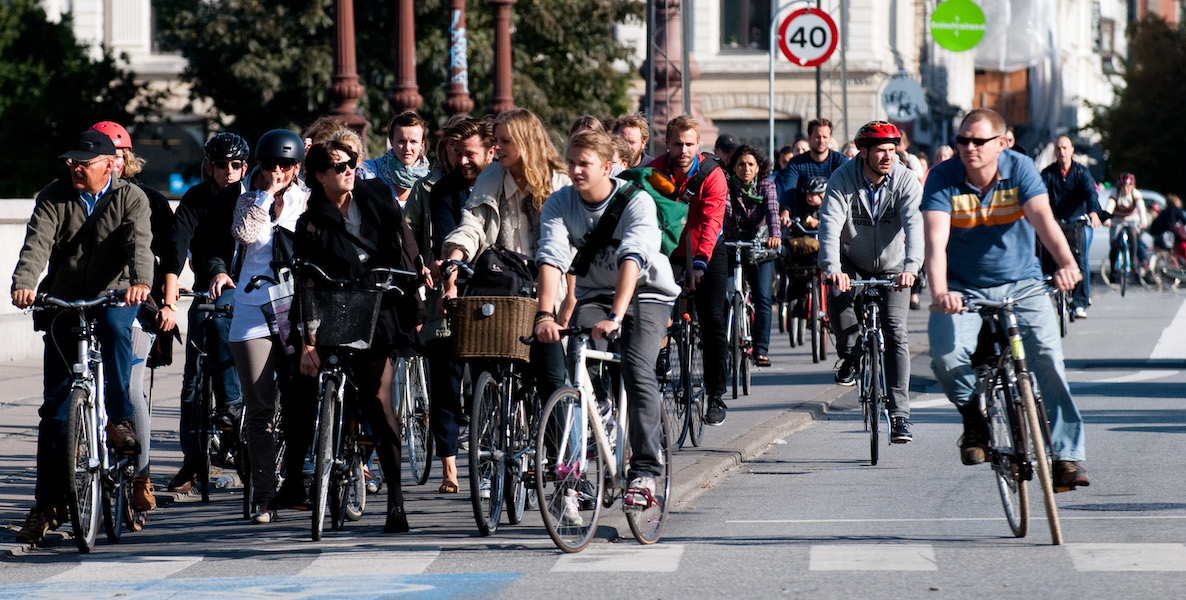On Sunday, the Nowak Metro Finance Lab at Drexel University, Accelerator for America and Blueprint Local released Towards a New System of Community Wealth, a new paper by the two of us, Jihae Lee and Daniel Palmer.
The paper makes some large observations and offers some big ideas for reform and transformation.
In our view, the United States is witnessing a radical shift—a quiet revolution—in its approach to the revitalization of distressed urban communities. Read the report Do Something
For almost 60 years, the U.S. has dutifully delivered a top-down “Community Development” system, narrowly focusing on producing low-income rental housing with a mix of federal tax incentives, federally encouraged bank debt and direct federal subsidies.
Over the past decade, a new system has begun to emerge, focused on developing people rather than buildings, with a blend of public, private, civic and community leadership and capital.
This system, which we label “Community Wealth,” is being raised bottom up, and is fundamentally committed to upgrading skills, growing entrepreneurs, increasing incomes and building assets. If codified and routinized, this system has the potential to bring hundreds of billions of market and civic capital off of the sidelines into productive use and drive transformative outcomes for disadvantaged communities across the country.
The revolution is precipitated by a complex mix of market and civic dynamics, the evolving practice of the community development movement and the inspiring work of a new class of investors and intermediaries.
Income inequality today is the largest it has been since the government began measuring it in 1967. Most urban neighborhoods, even those blocks away from reviving downtowns and robust waterfronts and university areas, are characterized by high poverty, low social mobility, weak market demand and growing income, health, education, and wealth disparities.
Urban communities are also past and present victims of institutional racism. They sit on the “wrong side of the color line;” access to quality capital and mentoring to help residents purchase homes and build businesses remains scarce while parasitic capital for dollar stores, payday lenders and check cashers is plentiful.
Articles by Bruce KatzRead More
At the same time, a new class of investors is entering the community space, focused on growing entrepreneurs and building strong local economies. Both the evolution of the old system and the invention of the new have been accelerated by the latest federal tool, Opportunity Zones.
We define Community Wealth as “a broad-based effort to build equity for low-income residents of disadvantaged communities.” Going deeper, Community Wealth aims to build equity by:
- Growing the individual incomes and assets of neighborhood residents by equipping them with marketable skills and enabling full or partial ownership of homes, commercial properties, and businesses;
- Growing the collective assets of neighborhood residents by endowing locally-run organizations with the ability to create, capture, and deploy value for local priorities and purposes;
- Improving access to private capital that has high standards, fair terms, a long-term commitment to the neighborhood, and reasonable expectations around returns and impact; and
- Enhancing inclusion by bringing fairness and transparency to neighborhood revitalization so that community voices are heard and respected and trust is restored, and local residents have the opportunity to participate in wealth that is created.
This paper specifies the systemic changes that need to occur in policy, practice About bottom-up Community Wealth in PhillyLearn More
We identify seven strategies to: (1) uncover community assets and market dynamics; (2) enhance local business demand; (3) strengthen neighborhood nodes; (4) expand businesses owned by people of color: (5) create access to “one-pocket” capital; (6); share value creation; and (7) support next generation institutions.
No one sector or level of society is sufficiently grounded or interdisciplinary enough to deliver the integrated transformation that is required. Rather, a mix of actors—existing community development entities, philanthropies, national financial institutions, the federal government, local governments, communities themselves—must spearhead new thinking and action around capacity, skills building, homeownership, entrepreneurship, and the local economy to replace an overly prescriptive and compartmentalized system of community development with a multi-layered and holistic system of community wealth.
Community Wealth is part observation, part aspiration and all provocation. The United States needs radical change at all levels and across all sectors if we are to alter fundamentally the life trajectory of disadvantaged residents and disadvantaged communities.
I hope you enjoy the read and, more importantly, that you provide Ross and myself with your comments, criticisms and suggestions in the comments section below. This paper has been inspired by cutting-edge research and practice and we need to deepen and broaden the discussion.
Bruce Katz is the director of the new Nowak Metro Finance Lab at Drexel University, created to help cities design new institutions and mechanisms that harness public, private and civic capital for transformative investment. Ross Baird is CEO of Blueprint Local and author of The Innovation Blind Spot.
Photo courtesy Dyana Wing So / Unsplash








